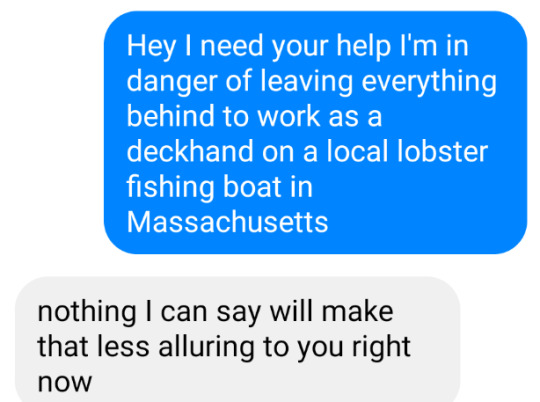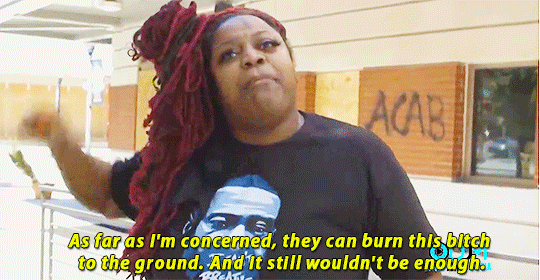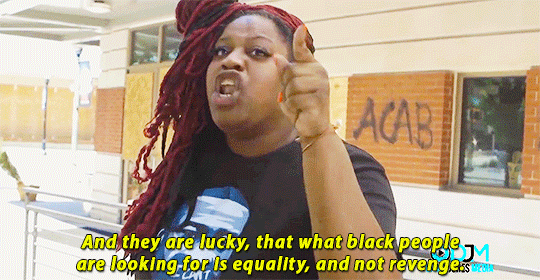Text
150 Years of False Peace A statement from the K’é Infoshop Collective
150 years ago today (Ed. Note: originally published June 1, 2018) the so-called United States allowed Diné prisoners of war to leave the Bosque Redondo concentration camp. The treaty is idealized through the lens of American exceptionalism as a symbol of “strength” or “sovereignty”, however if we examine the language of the treaty we will discover the effects of its consequences.
First we acknowledge not signing the treaty meant we would have been removed even further from the land we love. We would not be comforted by the presence of our Dzixl Nataanii/mountain leaders. We would be corralled to lands that didn’t know our songs, ceremonies, or names. We are not advocating for a romanticized “fight to the last man” battle with an enemy who still has access to nearly unlimited resources of death.
In the historical context, the signing of the treaty was not between two equal sovereigns coming to a fair or mutually beneficial agreement, as most would like to believe treaties are (they aren’t). The treaty is a list of demands coercing Diné people to deny our originals laws of matrilineal kinship, to accept settler morals of land ownership/slavery, and to build a toxic dependency on settler paternalism which they call “democracy”. These settler ideals then had to be translated from English into Spanish for the few Diné men who could speak Spanish. Oral history tells us the signers only understood that writing “X” meant our people could leave.
And so began an era of outright violence towards Native people being slowly replaced by the insidious violence of language and laws in the structures of settler colonialism.
Article 10 of the treaty states “No future treaty for the cession of any portion or part … shall be of any validity …unless agreed to … by at least three-fourths of all the adult male Indians …”. One may interpret this as a measure to protect the rights and privileges within the treaty, however it directly marks when we began to exclude Diné womxn from gaining political power. The treaty almost only references Diné “him” and “his” with a Diné “her” mentioned once. Patriarchy is a structure of violence that enforces the false belief of a gender-binary system, where the “male” is positioned over the “female”. The treaty symbolically removed Native processes of consensus that included all six genders of the Diné and the matrilineal strength of Diné society.
Article 9 lists specific tasks to carry out the United States’ settler colonialism project: “They will not … oppose the construction of railroads, wagon roads, mail stations, or other works of utility or necessity which may be ordered or permitted by the laws of the United States.” Much like the violent imposition of democracy upon Native people, so will the infrastructures of capitalism be built across Native lands where the only form of recourse is “payment of damages”. The settler desire to expand westward in order to gain capital to build and maintain empire left a literal trail of destruction not only upon the land, but upon Native womxn. Infrastructure projects included man-camps where Native womxn were murdered, trafficked, and abused in ways not too different from the resource extraction man-camps of today. Most of these early man-camps still exist in what we now know as “bordertowns”. Capitalism is not just a theory of economics; it is a map of extreme violence continuously drawn and updated by colonialism and imperialism.
Through immense suffering of the Diné, the United States legitimized the theft of land and rivers through its system of governance and laws. This system is not broken, it efficiently governs the murder and exploitation of Native lives and land.
The treaty promised peace to Diné people. We are not at peace. Bordertown settlements along the railways continue to bleed out Native rebellion through white supremacy and economic exploitation. The United States says treaties are the supreme law of the land yet allow states created after 1868 to be the primary beneficiaries of rivers that have flowed through our creation stories, denying us the ability to create a future with water. Colonialism isn’t finished, it’s in every pipeline, every water settlement, every police bullet that kills a Brown, Black, or Native person. The treaty is a symbol of great duress and false promises.
The treaty is not to be celebrated. Our ancestors warned us of this very moment, powerful songs and ceremonies were performed to guide us onward. We must finish their songs and ceremonies by not simply enduring the monsters of colonialism, capitalism, and patriarchy, but to totally crush them. Let us organize with all good relatives of the Earth to create a future based on kinship and reciprocity.
This isn’t a call to pre-contact, this is a demand for a future free from the monsters that harm us all by slaying them.
In Kinship and Solidarity,
– K’é Infoshop Collective
111 notes
·
View notes
Text
Read this:
“I want to tell a story about an invisible elephant.
Once upon a time, when I was in graduate school at UCSB, the department of religious studies held a symposium on diasporic religious communities in the United States. Our working definition for religious diaspora that day was, “religious groups from elsewhere now residing as large, cohesive communities in the US.” It was a round table symposium, so any current scholar at the UC who wanted to speak could have a seat at the table. A hunch based on hundreds of years of solid evidence compelled me to show up, in my Badass Academic Indigenous Warrior Auntie finery.
There were around 15-20 scholars at the table, and the audience was maybe fifty people. There was one Black scholar at the table, and two Latinx scholars, one of whom was one of my dissertation advisors. The other was a visiting scholar from Florida, who spoke about the diasporic Santería community in Miami. But everyone else at the table were white scholars, all progressively liberal in their politics, many of whom were my friends. Since there was no pre-written agenda, I listened until everyone else had presented. I learned a tremendous amount about the Jewish diaspora in the US, and about the Yoruba/Orisha/Voudou, Tibetan Buddhist, Muslim, and Hindu communities, and even about a small enclave of Zoroastrians.
As they went on, I realized my hunch had been correct, and I listened to them ignore the elephant, invisible and silent, at that table.
So I decided to help her speak the hell up. “Hello, my name is Julie Cordero. I’m working on my PhD in Ethnobotany, Native American Religious Traditions, and history of global medical traditions. I’d like to talk about the European Catholic and Protestant Christian religious diaspora in the United States, as these are the traditions that have had by far the greatest impact on both the converted and non-converted indigenous inhabitants of this land.”
Total silence. And then several “hot damns” from students and colleagues in the audience. I looked around the table at all the confused white faces. My Latinx advisor slapped his hand on the table and said, “Right!!?? Let’s talk about that, colleagues.”
The Black scholar, who was sitting next to me, started softly laughing. As I went on, detailing the myriad denominations of this European Christian Diaspora, including the Catholic diocese in which I’d been raised and educated, and the brutal and genocidal Catholic and Protestant boarding schools that had horribly traumatized generations of First Nations children, and especially as I touched on how Christians had twisted the message of Christ to try and force people stolen from Africa to accept that their biblically-ordained role was to serve the White Race, her laughs grew more and more bitter.
The Religious Studies department chair, who’d given a brilliant talk on the interplay between Jewish and Muslim communities in Michigan, stopped me at one point, and said, “Julie, I see the point you are so eloquently making, but you’re discussing American religions, not religious diasporic communities.” I referred to the definition of diaspora we had discussed at the start of the discussion, and then said, “No, Clark. If I were here to discuss religions that were not from elsewhere, I’d be discussing the Choctaw Green Corn ceremony, the Karuk Brush Dance, the Big Head ceremonial complex in Northern California, the Lakota Sun Dance, or the Chumash and Tongva Chingichnich ritual complex.”
It got a bit heated for a few moments, as several scholars-without-a-damn-clue tried to argue that we were here to discuss CURRENT religious traditions, not ancient.
Well. I’ll let you use your imagination as to the response from the POC present, which was vigorously backed by the three young First Nations students who were present in the audience (all of whom practice their CURRENT ceremonial traditions). It got the kind of ugly that only happens with people whose self-perception is that they, as liberal scholars of world cultures with lots of POC friends and colleagues, couldn’t possibly be racist.
Our Black colleague stood and left without a word. I very nearly did. But I stayed because of my Auntie role to the Native students in the audience.
I looked around at that circle of hostile faces, and waited for one single white scholar to see how unbelievably racist was this discursive erasure of entire peoples - including my people, on whose homeland UCSB is situated.
Finally, a friend spoke up. “If we are going to adhere to the definition of diaspora outlined here, she is technically correct.”
And then my dear friend, a white scholar of Buddhism: “In Buddhist tradition, the Second Form of Ignorance is the superimposition of that which is false over that which is true. In this case, all of us white scholars are assuming that every people but white Americans are ‘other,’ and that we have no culture, when the underlying fact is that our culture is so dominant that we’ve deluded ourselves into thinking it’s the neutral state of human culture against which all others are foreign. Even the Black people our ancestors abducted and enslaved we treat as somehow more foreign than ourselves. And, most absurdly, the peoples who are indigenous to this land are told that we belong here more than they do.”
People stared at their hands and doodled. The audience was dead quiet.
And you know what happened then? The elephant was no longer invisible, and my colleagues and I were able to have a conversation based on the truths about colonialism and diaspora. We were THEN able to name and discuss the distinctions between colonial settlements and immigrant settlements, and how colonial religious projects have sought to overtake, control, and own land, people, and resources, while immigrant and especially refugee diasporic communities simply seek a home free from persecution.
As we continue this national discussion, it is absolutely key to never, ever let that elephant be invisible or silent. You are on Native Land. Black descendants of human beings abducted from their African homelands are not immigrants. European cultures are just human cultures, among many. And the assignation of moral, cultural, racial superiority of European world views over all non-Euro human cultures is a profound delusion, one that continues to threaten and exterminate all people who oppose it, and even nature itself.
I hope that this story has comforted the afflicted and afflicted the comfortable.”
- Julie Cordero-Lamb, herbalist & ethnobotanist from the Coastal Band of the Chumash Nation
54K notes
·
View notes
Text
CT, Transcending Madness, 1992 (1971)
The ordinary level of thought process has been transformed into a more ambitious one. Being able to click with your thought process and work something out is good, but beyond that goodness, you begin to get a faint idea of satisfaction—just a teeny-weeny bit to start with and then it begins to grow, grow, grow, and grow. It becomes addictive and self-destructive. So that seems to be the limitation. If ones experiences, discoveries, and intellectual understandings coincide simultaneously, like putting together a jigsaw puzzle, that's fine. That doesn't mean that you have to have an absolute understanding or a complete command of the whole thing necessarily at all. But you could have a basic glimpse or understanding of the situation and you could go along with it, without indulging in the experience as a new discovery of an exciting thing.
6 notes
·
View notes
Text

”Settler Colonialism’s Hiroshima”: A Talk by Iyko Day
It is relatively unknown that in the 1940s, uranium from the Belgian Congo and the Northwest Territories in Canada was used in the first atomic bomb that was tested in New Mexico and detonated over Hiroshima in 1945. This presentation explores the ways in which settler colonial racial capitalism designates Indigenous lands as non-sights of nuclear modernity, making them available for what Traci Brynne Voyles calls “wastelanding.” These are sites that are deemed unproductive, backward, and peripheral to the technological superiority of the global north but are nevertheless mined for “resources.” […] Through analyses of visual representations of extractive wastelands by artists of color, it conceptualizes the wasteland as the dispossessed, grotesque other of the pristine colonial landscape. These artworks demonstrate that the wasteland is also a repository of forgotten, intimate histories of land and labor, whose representation allegorizes the abstraction of human labor. Moving past what Gabrielle Hecht identifies as a nuclear exceptionalism that remains focused on First World electricity and military production, the project probes the convergence of nuclear logistics and the repressed histories of colonial dispossession that coalesce in the capitalist wasteland.
Iyko Day is an Associate Professor of English at Mt. Holyoke College. She is the author of Alien Capital: Asian Racialization and the Logic of Settler Colonial Capitalism (Duke University Press, 2016). […]
[From: Christopher Vials, for UConn,]
——————————————————————–
“Defining the Social Technologies of Non-Worlding: Challenging Nuclear Hegemony and Neoliberal Colorblindness”: A review/summary of the aforementioned Iyko Day presentation, from Austin D. Huffman. [Photo above from Huffman’s review.]
Day began her talk, “Settler Colonialism’s Hiroshima,” by taking up the question of how the 1945 atomic bombings in Japan structure our knowledge of a post-war, nuclearized world, and how the dominant perceptions of this event rely on forms of “colonial unknowing,” a concept that Goldstein helped theorize. By mapping capitalism’s logistical networks, she traces a “supply chain of violence” back to the sites of accumulation that allowed for the production of these weapons of mass destruction in the first place. Some of these sites include the Belgian Congo, the Northwest Territories in Canada, and Navajo communities in New Mexico. These areas have been disastrously affected by uranium mining, radioactivity, and nuclear testing. Uranium mining in particular requires hyper-exploitable and disposable labor; yet even though Indigenous lands, resources, and workers are essential to nuclear modernity, they are construed as non-places and non-persons by the settler colonial state. […]
How can such a magical hegemony be challenged? How might the violent non-worlding of Indigenous peoples and the occlusion of living labor be subverted? Day attempts to do this by examining Asian and Asian-American visual culture. By connecting nuclear non-sites to the works of multi-media artist Allan deSouza and sculptor Takahiro Iwasaki, Day endeavors to rethink these spaces and histories outside of anthropocene cataclysms. Popular media of nuclear disasters and fallout (what some refer to as “ruin porn”) rarely includes human beings. Consider the iconic image of the mushroom cloud rising over Hiroshima, the eerie deserted cityscapes of the Chernobyl exclusion zone, or even the “blighted” neighborhoods of post-industrial Detroit. They all give the impression of a gradual process of degradation devoid of human agency and labor; they serve as abstractions […].
Both deSouza and Iwasaki reveal the abstractions of capitalist production by using forms of detritus. In deSouza’s Terrain series, he uses his own bodily detritus—eyelashes, ear wax, nail clippings, and pubic hair – as a medium to construct grotesque landscapes that subtly satirize the masculinist and nationalist motifs in the art and photography of American 19th and 20th century artists like Thomas Cole and Ansel Adams (Day extensively unpacks the “romantic anticapitalist” ethos of these American icons in her book 2016 book Alien Capital).
——-
From a separate publication: “Introduction – On Colonial Unknowing” by Manu Vimalassery, Juliana Hu Pergues, and Alyosha Goldstein for Theory & Event Vol. 19 Issue 4 (2019).
Colonial unknowing takes many forms. For instance, borrowing from Jodi Byrd, the idea of colonial agnosia conveys how colonialism remains pervasive but not comprehended as an extensive and constitutive living formation by those situated in complicity with colonial occupation […].
How do we understand our locations in the colonial present as we contemplate and work toward the ongoing imperative of decolonization? In North America and the Caribbean, the predominant lack of acknowledgement or engagement with the histories and contemporary relations of colonialism – especially with regard to the specificities of Indigenous peoples and colonial entanglements of differential racialization – is not simply a matter of collective amnesia or omission. The magnitude of this disavowal is not primarily a matter of a forgotten or hidden past, at least to the extent that forgetting might be viewed as a passive relation or a concealed past might suspend culpability. Instead, this ignorance – this act of ignoring – is aggressively made and reproduced, affectively invested and effectively distributed in ways that conform the social relations and economies of the here and now. Colonial unknowing endeavors to render unintelligible the entanglements of racialization and colonization, occluding the mutable historicity of colonial structures and attributing finality to events of conquest and dispossession. As with Jodi Byrd’s theorizations in The Transit of Empire, we emphasize how colonialism requires a constitutive relation to Indigenous peoples and differential racialization for its claims to place, emplotment, and worldings that notions of forgetting, elimination, and absence tend to neglect […].
234 notes
·
View notes
Text
HALLO FRIENDS
I am a Black Arab/Mexican non-binary person looking for an assist from the community to get me out of a bad situation! (Dis me>)

I am trying to move out of my current housing situation b/c my ableist roommates/landlords made living there untenable. Since i gotta move in an emergency, i would def appreciate if folks could possibly help b/c Miss Rona kneecapped my income and i was left w/o savings. I need to raise a minimum of $2180 as soon as possible so i can pay my security deposit!
$3000 should be enough to cover all my up front moving expenses and help me eat! But i definitely need the $2180 to secure the space! I really need to move and ill be so grateful to y’all if you can help!

IF YOU CAN SPARE A FEW DOLLARS TO HELP ME MOVE TO STABLE HOUSING PLEASE VENMO @SHARKCLOSET
10K notes
·
View notes
Text
when i know an insect, i project onto it. i make it 5 feet tall, i give it a face or a mask, i watch its footwork and gestures too closely. i also become an insect. my footwork and gestures too close, my mandibles and antennae primed, quick and steady in the dust. a gift bites! i think with my mouth.
11 notes
·
View notes
Text
ahdgdhfhsjk this shit always has my deadname.
anyway, we're trying to raise money to get tents and fams for homeless people here. it's been over 100 degrees and people need any shelter they can get.
1K notes
·
View notes
Text

@afloweroutofstone
65 notes
·
View notes
Video
This 3 minute clip of James Baldwin from a documentary aired on television in early 1969 explaining why “black people are in the streets” remains frustratingly relevant. As Baldwin explains, what was happening then had to do with “the lives they are forced to lead in this country. And they’re forced to lead these lives by the indifference, and the apathy, and a certain kind of ignorance, a very willful ignorance, on the part of their co-citizens.”
This was recorded in 1968. It’s been 52 years. History is repeating itself because white America has continued to remain “willfully ignorant.” As Baldwin rightly stated, “we will either live here together or we will die here together. I am telling you, time is telling you, you will either listen or you will perish.”
7K notes
·
View notes
Photo





Audre Lorde, The Transformation of Silence into Language and Action, [Paper delivered at the Modern Language Association’s “Lesbian and Literature Panel,” Chicago, IL, December 28, 1977. First published in «Sinister Wisdom» 6, 1978, and The Cancer Journals, Spinsters, Ink, San Francisco, CA, 1980]; in Audre Lorde, Sister Outsider. Essays and speeches, The Crossing Press, Trumansburg, NY, 1984, pp. 40-44 (pdf here) [Cover Design by Mary A. Scott. Cover photograph by Salimah Ali]
3K notes
·
View notes
Text
in response to international attention to violence by the Buffalo Police Department, the Buffalo Police Advisory Board published a list of demands yesterday, June 5, in which they demand the government of Buffalo to “Adopt the Law Enforcement Assisted Diversion program”. I have been encountering suggestions from people in various locations for similar reforms to policing as a way of reducing the harmfulness of policing. I need people to know:
psychiatric violence is not the answer to police violence. psychiatry is the medicalization of policing.
police–psychiatric diversion programs such as Law Enforcement Assisted Diversion (LEAD National Support Bureau) or Crisis Intervention Team (CIT International) claim success based on lower rates of arrests and charges compared to what they call “traditional” policing. (by contrasting police–psychiatric diversion programs against “traditional” policing, they frame police–psychiatric cooperation as “untraditional” despite a long history of interrelationship between policing and psychiatry.) they make this claim by discounting forced (re)entry into and compliance with the psychiatric system as a form of penalization and control over a person’s ability to exercise their will.
this is how police–psychiatric diversion programs “work”: police encounter a person who: is experiencing extreme distress or whom a third person reported that this person is distressed (and maybe distressing this other person); has been using mind-altering drugs; has been doing sex work; is homeless. (the LEAD National Support Bureau discusses “mental illness”, drug use, sex work, and homelessness.) police can choose between criminalizing this person and psychiatrizing this person. the criminalized person will experience the criminal legal system, with all that that includes; if police choose criminalization, then later in the criminalization process a judge can also choose criminalization and/or psychiatrization at that point. the psychiatrized person will experience the psychiatric system, including bodily interventions that they don’t consent to and are unable to refuse, such as—and commonly—major tranquilizers (aka “antipsychotics”). psychiatric interventions like “Assertive Community Treatment” or “Assisted Outpatient Treatment” are psychiatric forms of probation. if police choose to psychiatrize this person, they know that this choice will not count toward arrests or charges, even if psychiatrization includes detention/incarceration in the form of forced psychiatric hospitalization (and even when people enter psychiatric hospitalization “voluntarily”, we aren’t free to leave). for a police–psychiatric diversion program, psychiatrization of this person will count toward “successes”, no matter how much it resembles arrest or charges or other aspects of criminalization.
to quote my favorite chart, “Reformist Reforms vs. Abolitionist Steps in Policing” by Critical Resistance: “More training will require more funding and resources going to police to develop and run trainings. [More training] furthers the belief that better training would ensure that we can rely on police for safety, and that instances of police harm and violence occur because of lack of training. [More training] increases [tools, tactics, and technology police have at their disposal]. [More training] will increase the scope of policing, given the type of training. For instance, some advocate for police to be trained on how to respond to mental health crises, furthering the idea that police are the go to for every kind of problem.” one of the goals of a LEAD program, according to the LEAD National Support Bureau, is to “strengthen the relationship between law enforcement and the community”. the LEAD National Support Bureau also has this to say about its program: “LEAD is not a human services program, but a public safety & order program that uses human resources tools.” (“Essential Principles for Successful LEAD Implementation” [2020]).
abolish all carceral systems and systems of social control! abolish all policing!
736 notes
·
View notes
Text
https://blackautonomynetwork.noblogs.org/post/2019/03/20/reparations-as-a-verb/
27 notes
·
View notes
Text
"We can demand of the state to give us land, or we can liberate it for all. We can demand of the state to give us a better life, or we can make and share one ourselves. We can demand of the state to stop killing us, or we can act to defend ourselves. We can demand of the state, or we can act to create our own autonomous power, our own liberation, against and outside of the confines of the state and capital."
- Reparations as a Demand Verb, Salish Sea Black Autonomists
505 notes
·
View notes












